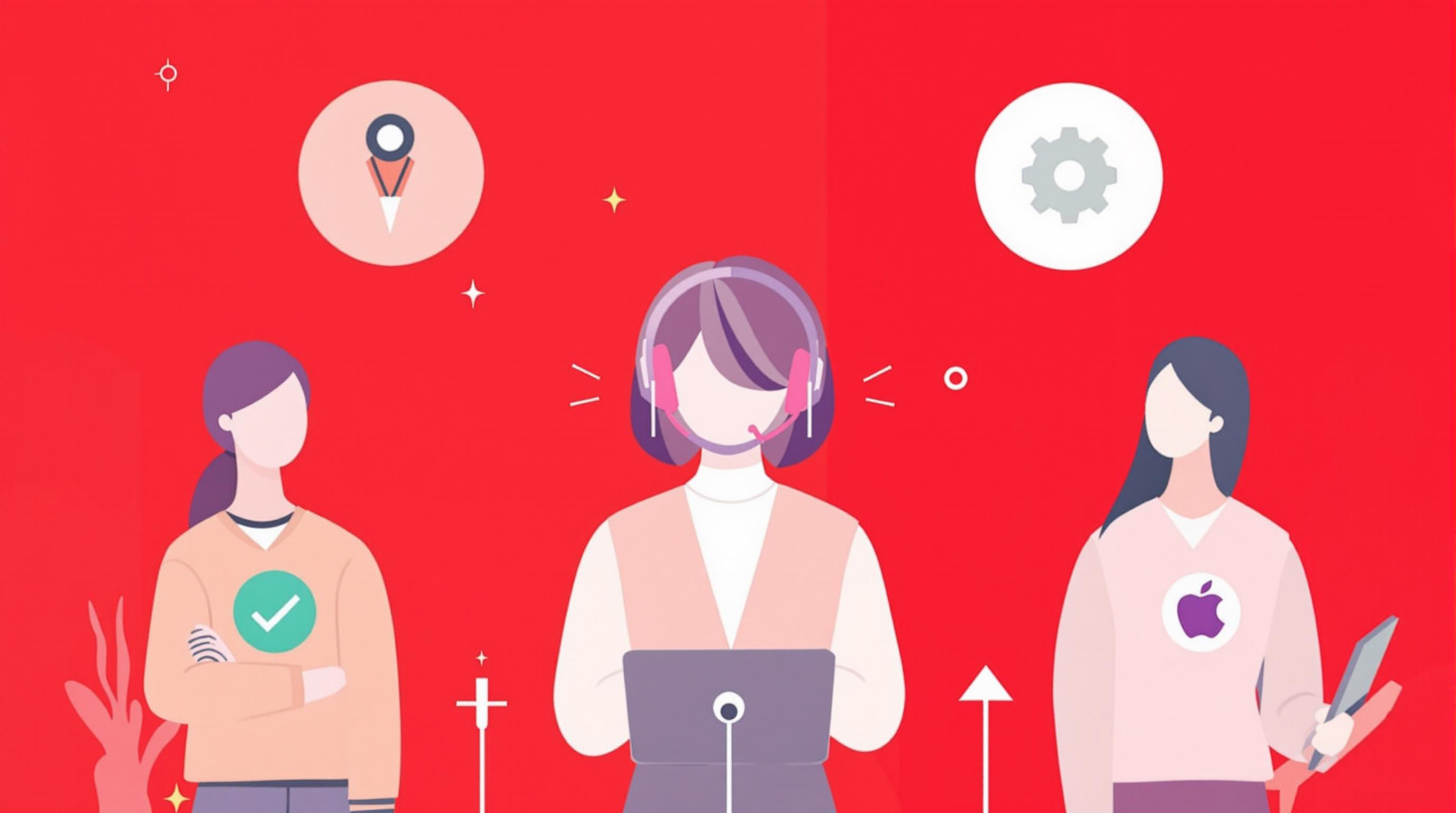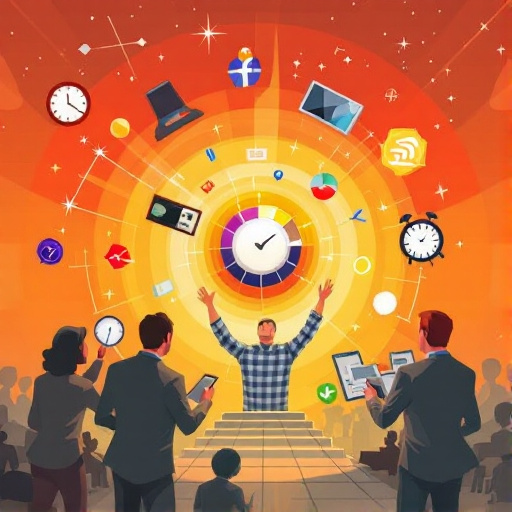Featured Articles
- 7 Game-Changing AI Recruitment Platforms Released Since 2019 That Are Redefining Hiring Efficiency
- Harnessing the Power of Micro-Experiences: A New Frontier in Employee Engagement and Retention Strategies
- Navigating the Quirks of Remote Teams: Unconventional HR Tips for Boosting Virtual Morale
- Top 6 Workforce Analytics Platforms Launched Since 2019: In-Depth Reviews and ROI Rankings for HR Leaders
- Top 8 Talent Management Tools Launched Since 2019: A Comprehensive Comparison and Buyer’s Guide
Unconventional HR: How Embracing Neurodiversity Can Transform Your Workplace Culture and Innovation
Unconventional HR: How Embracing Neurodiversity Can Transform Your Workplace Culture and Innovation
Embracing neurodiversity in the workplace can not only enhance your company's culture but can also spur innovative thinking and problem-solving. This article explores the transformational impact of inclusivity, showcasing real-world examples and a variety of perspectives to illustrate why unconventional HR practices are not just beneficial but essential.
The Power of Neurodiversity
Neurodiversity is a term used to describe the natural range of variations in human brains and thinking styles. It celebrates the unique qualities of individuals with conditions such as autism, ADHD, dyslexia, and more. According to a report by the Pew Research Center, approximately 15% of the global population can be considered neurodivergent. Emphasizing neurodiversity in the workplace opens up a treasure trove of ideas and perspectives that enrich team dynamics and drive creativity.
A Diverse Mindset Fuels Innovation
Let’s take a moment to think about the best ideas—are they not often born from varied perspectives? When people from different backgrounds come together, their differing views can lead to creative solutions that a homogenous group might not conceive. For example, Microsoft has implemented a neurodiversity hiring program, recognizing that individuals on the autism spectrum often possess exceptional skills in areas like software testing and data analysis. The company reported that these individuals brought invaluable insights and attention to detail that made a significant difference in their projects. Engaging neurodivergent minds can accelerate innovation and enhance problem-solving capabilities.
Case Study: SAP's Neurodiversity Program
Saudi Aramco and SAP have both adopted programs aimed at integrating neurodiverse candidates into their teams. SAP's initiative, called the Autism at Work program, was launched in 2013 and has been a resounding success. They found that neurodiverse employees not only performed at par but often exceeded expectations in fields like programming and data analytics. After employing neurodiverse individuals, SAP reported an astounding 40% increase in productivity within their teams. This compelling statistic illustrates how embracing neurodiversity can translate into profitable outcomes, unearthing potential you never knew existed.
Overcoming Barriers
Let’s be honest: biases and preconceived notions are as common as morning coffee. Many organizations still struggle to understand the capabilities of neurodivergent individuals, often incorrectly associating these traits with limitations. A survey by the Society for Human Resource Management (SHRM) stated that only 24% of employers believe they offer a supportive environment for neurodiverse individuals. But here's the kicker: fostering inclusion pays off. Companies with diverse teams report increased profitability and productivity, according to a McKinsey report.
Building a Neuro-Inclusive Culture
Creating an inclusive environment isn’t just about recruitment; it's about retention and encouragement, too. Organizations can start by reevaluating their hiring practices. Traditional interviews may not allow neurodivergent candidates to shine. Instead, consider adopting alternative recruitment strategies that highlight skillsets rather than the conventional interview methods. For instance, offering practical assessments or work trials can provide a clearer picture of a candidate's capabilities.
Concrete Steps to Foster Inclusion
1. **Create Awareness**: Conduct training sessions that raise awareness about neurodiversity to help dispel myths and promote understanding. Communication is key!
2. **Adopt Flexible Work Arrangements**: Offering remote work options or flexible hours can help neurodivergent employees thrive.
3. **Set Up Support Systems**: Implement mentorship programs or provide liaisons who can assist neurodiverse employees in navigating the workplace.
4. **Encourage Open Dialogue**: Foster a culture of openness where all employees feel safe to share their experiences and challenges.
5. **Celebrate Diversity**: Regularly highlight neurodiverse employees' achievements, creating role models that others can look up to.
Stories of Success
Let's leave the statistics behind for a moment and dive into personal stories. Take the narrative of Carly, a young woman with autism who felt overlooked in her previous jobs. She was passionate about design but continually faced rejection due to her limited communication skills. When she finally landed a position at a neurodiverse-friendly firm, Carly not only thrived but became instrumental in developing an award-winning product line. This isn't just a win for her; it's a testament to the potential within many neurodiverse individuals waiting to be unlocked!
The Humor in Misunderstanding
Ever heard that light-hearted saying, “If at first, you don’t succeed, redefine success?” Neurodiversity and its quirks can bring a touch of humor to the workplace. Picture this: a team meeting where someone misinterprets a technical term due to a unique perspective and, in turn, comes up with a completely new approach to a problem. Instead of being seen as a misstep, those moments often lead to the most inventive breakthroughs. Embracing these differences can make your company culture more vibrant and enjoyable.
The Rewards of Risk-Taking
Embracing neurodiversity may mean navigating complexities and, at times, taking risks. However, look at it this way: every major tech advancement and innovative leap was fueled by risk-takers. Tesla revolutionized the automobile industry by leaning into uniqueness, and those that follow suit in recognizing diverse perspectives can shape the next wave of innovation.
Attracting Top Talent
The talent pool is increasingly willing to prioritize companies that value diversity. In fact, LinkedIn's Global Talent Trends report shows that 71% of job seekers consider a diverse workforce an essential factor in their job search. If fostering neurodiversity isn’t on your company’s radar, you might find yourself losing out on exceptional talent. Individuals want to work for organizations that reflect their values and beliefs—believe me, embracing neurodiversity is the way to go.
Conclusion: A Call to Action
As we venture into this new age of workplace culture, it's time to abandon conventional norms and embrace a more unconventional route. Your organization can actively reshape its culture by championing neurodiversity, paving the way for innovation, creativity, and ultimately success. Don’t wait for the competition to set the standard—lead the charge! Start small by integrating some of the best practices outlined in this article and watch your workplace transform, one neurodiverse mind at a time.
Final Thoughts
From fostering a unique company culture to enhancing your bottom line, the dividends of embracing neurodiversity are clear. For those of us steadfast in traditional hiring practices, it’s time to step back and look again. Remember: "In diversity, there is beauty and strength" — Maya Angelou. So grab that opportunity and let the magnificent minds of the neurodiverse enrich your workplace!




